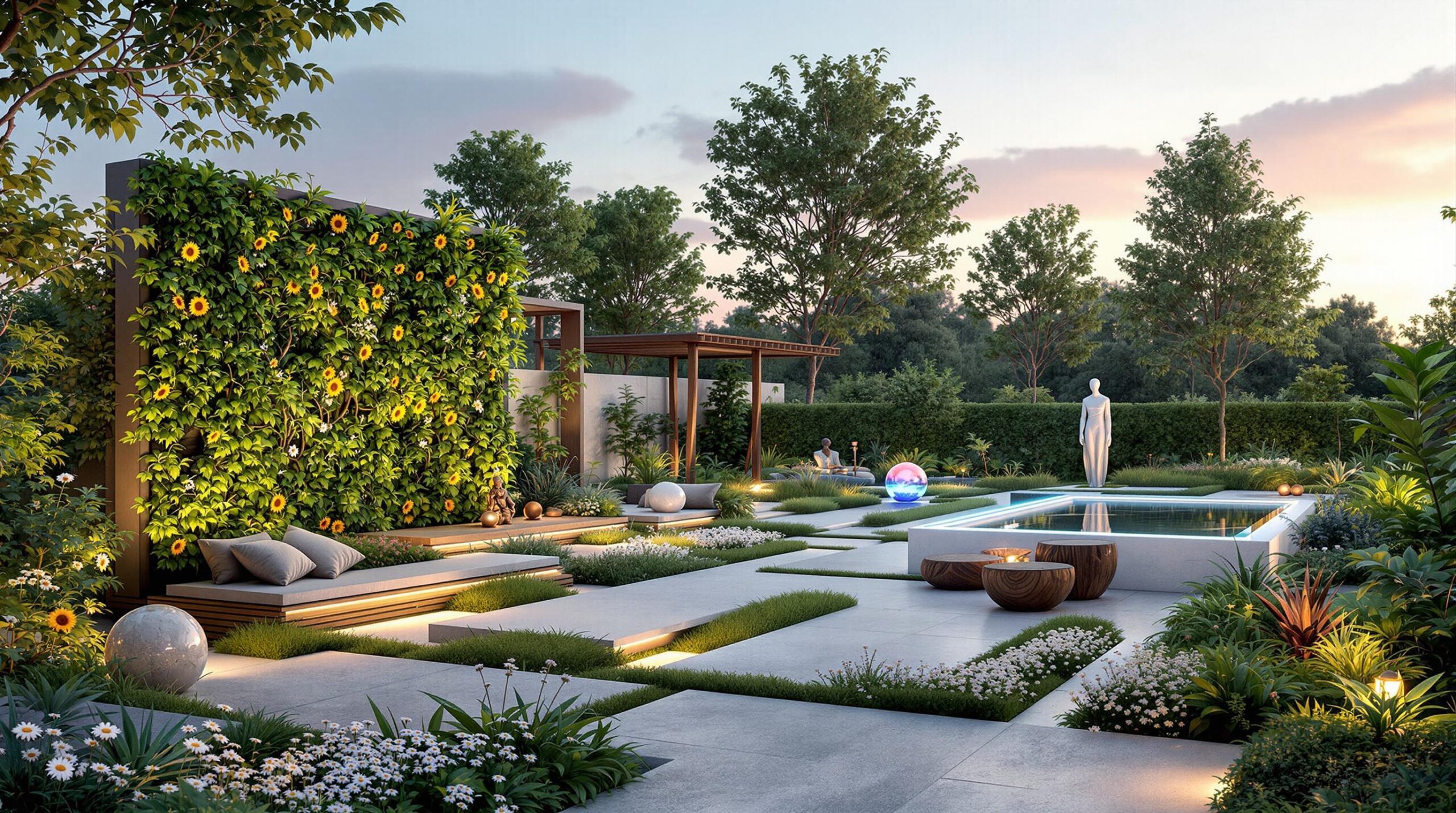As we step into 2025, garden design continues to evolve, reflecting a deeper understanding of sustainability, wellness, and community connection. This year, trends are not merely about aesthetics; they emphasize creating multifunctional spaces that nurture both plants and people. From micro-gardens to the innovative use of technology, the latest developments in landscape design are reshaping our outdoor experiences.
In this article, we will explore the most exciting trends in garden design for 2025, highlighting the key themes that define the modern garden aesthetic and functionality.
1. Growing micro-gardens
Micro-gardens have become a saving grace for urban dwellers with limited outdoor space. From vertical wall planters to hydroponic systems, every corner can blossom with greens, herbs, and flowers. This trend is about maximizing utility, even in minimal spaces. Whether it’s a balcony adorned with cascading herbs or a windowsill sprouting microgreens, the redefinition of gardening’s boundaries encourages creativity.
Space-saving innovations
The rise of innovative gardening solutions allows more people to engage with nature. Techniques like vertical gardening and container gardening have made it possible to cultivate food or ornamental plants practically anywhere. Think about a compact indoor garden featuring an array of herbs or a flowery balcony that transforms a dull space into a blooming oasis.
| Gardening Method | Benefits | Ideal For |
|---|---|---|
| Vertical Gardens | Maximizes space, enhances air quality | Apartments, small yards |
| Hydroponics | Soil-less growing, faster plant growth | Indoor growers, beginners |
| Container Gardening | Flexibility, portability | All gardens, balconies |
2. Year-round gardening
The concept of seasonal gardening is now obsolete as more enthusiasts strive to grow throughout the year. Innovations in gardening tools and techniques allow for extended growing seasons, even in colder climates. With methods like greenhouse planting and the use of frost covers, gardeners can bypass the limitations imposed by the weather.
Expanding your growing season
By using cold frames or protective coverings, anyone can enjoy fresh produce all year long. This commitment to creating year-round gardens reflects a desire for sustainability and self-reliance, aligning perfectly with contemporary values emphasized in Garden Design and Better Homes & Gardens.
| Season | Suitable Plants | Protection Methods |
|---|---|---|
| Spring | Tomatoes, herbs | Row covers |
| Summer | Peppers, cucumbers | Shade cloth |
| Winter | Leafy greens, garlic | Cold frames |
3. Viewing the garden as a social gathering space
Trends have shifted to emphasize gardens as vibrant, social settings. Many people now seek to combine their kitchen gardens with spaces for entertaining family and friends. By incorporating features like fire pits and seating areas into their outdoor design, homeowners create inviting environments that encourage community and relaxation.
Designing for connection
With the increasing interest in community gardening, outdoor spaces are becoming places for shared knowledge and resources. The integration of social spaces in gardens is an opportunity for communal interaction and enhanced relationships, as demonstrated in various design publications, including Gardener’s World and Landscape Architecture Magazine.
4. Climate-resilient gardening
As environmental concerns grow, gardeners are focusing on climate-resilient practices. This includes the introduction of drought-tolerant and native plants, which require less water and maintenance. More property owners are daring to redesign landscapes to embrace nature’s resilience.
| Plant Type | Benefits | Examples |
|---|---|---|
| Drought-resistant Plants | Low water demand | Sedum, lavenders |
| Native Plants | Thrives in the local ecosystem | Coneflowers, black-eyed Susans |
| Wildflowers | Supports pollinators | Milkweed, sunflowers |
5. Prioritizing gardening for wellness
Gardening’s therapeutic benefits are becoming increasingly recognized. Creating wellness gardens specifically designed to promote relaxation exists as a growing trend. Elements such as fragrant herbs, sensory plants, and tranquil water features attract those looking for mental health benefits from their garden spaces.
The impact on mental health
This trend highlights the profound connection between nature and well-being. Incorporating mindful design within garden spaces allows individuals to cultivate peace, leading to a greater sense of fulfillment and tranquility.
FAQ
1. What are micro-gardens?
Micro-gardens are compact growing spaces that can fit in small areas. They often utilize vertical gardening techniques and container planting.
2. How can I garden year-round?
Year-round gardening can be achieved by using greenhouses, cold frames, and protective coverings that allow for extended growing periods.
3. What plants are best for climate-resilient gardening?
Drought-tolerant and native plants, such as sedum and coneflowers, are excellent choices for climate-resilient gardens.
4. How can I create a wellness garden?
To create a wellness garden, focus on incorporating fragrant herbs, sensory plants, and calming features like water elements into your design.
5. Why should gardening be considered a social activity?
Gardens can foster connection among community members, transforming them into spaces for sharing knowledge, resources, and experiences.


















